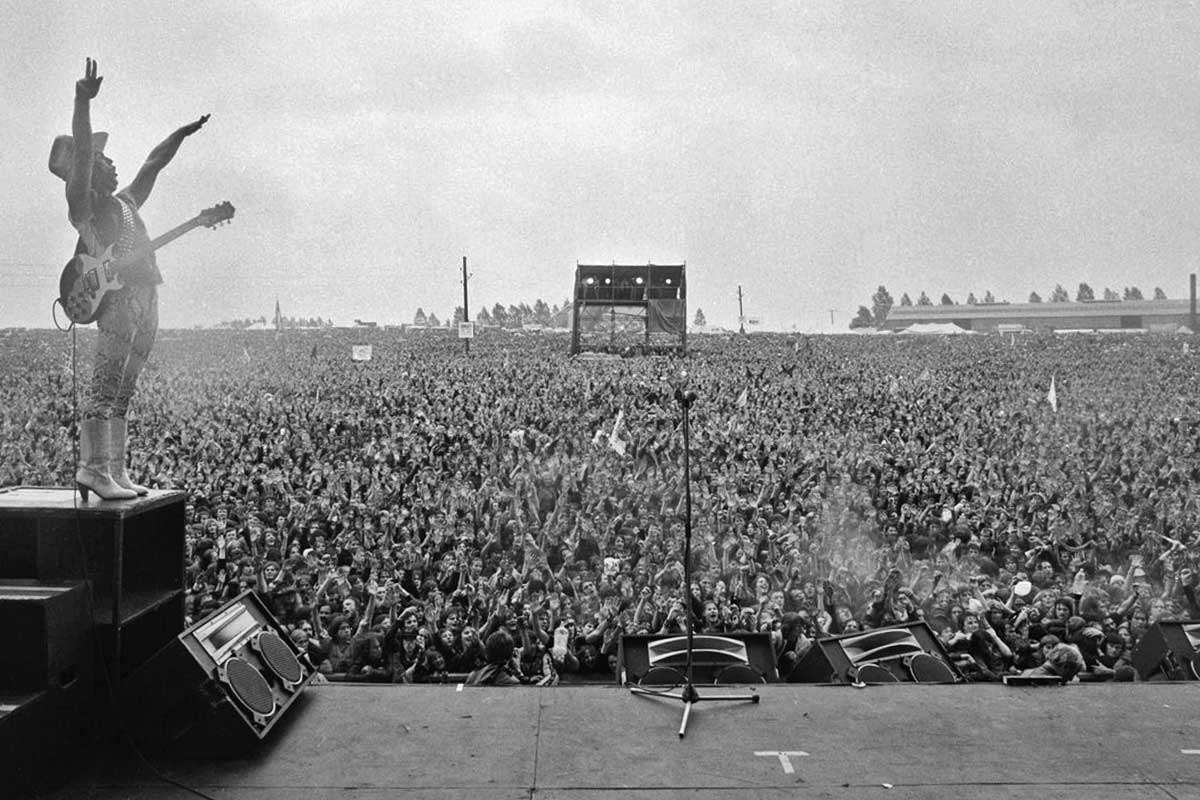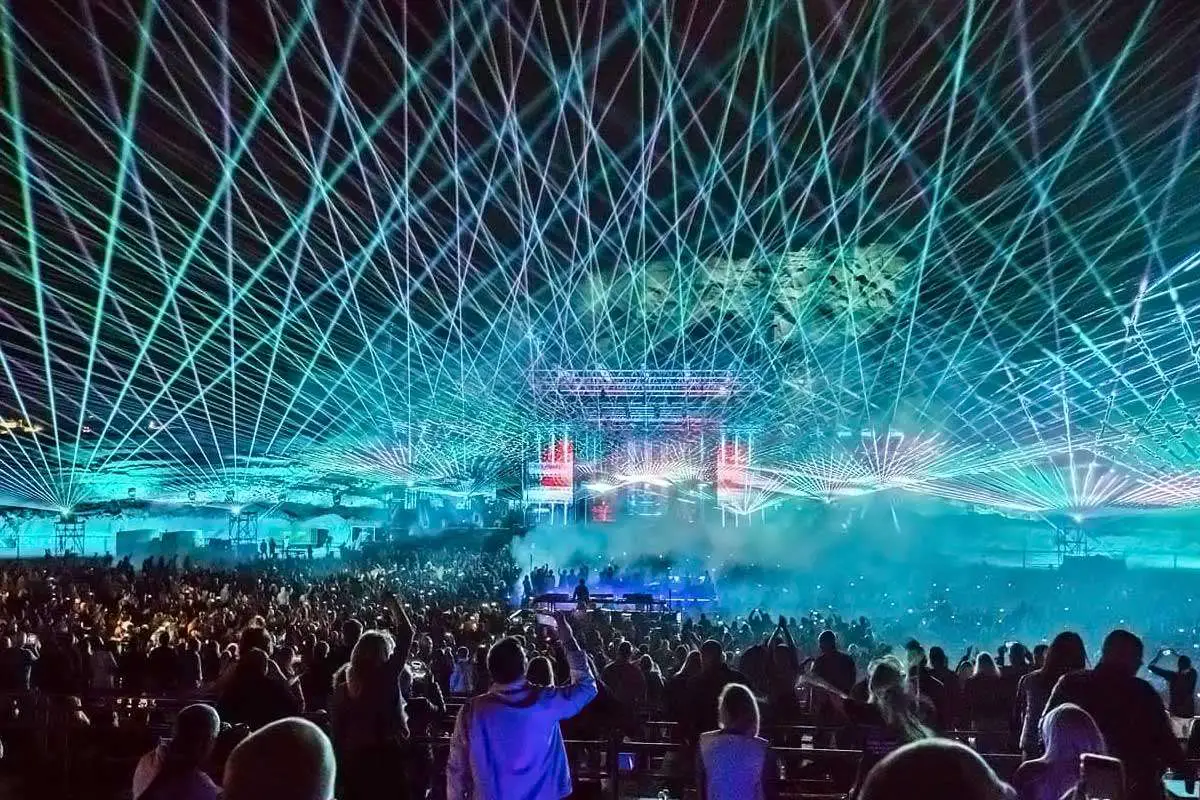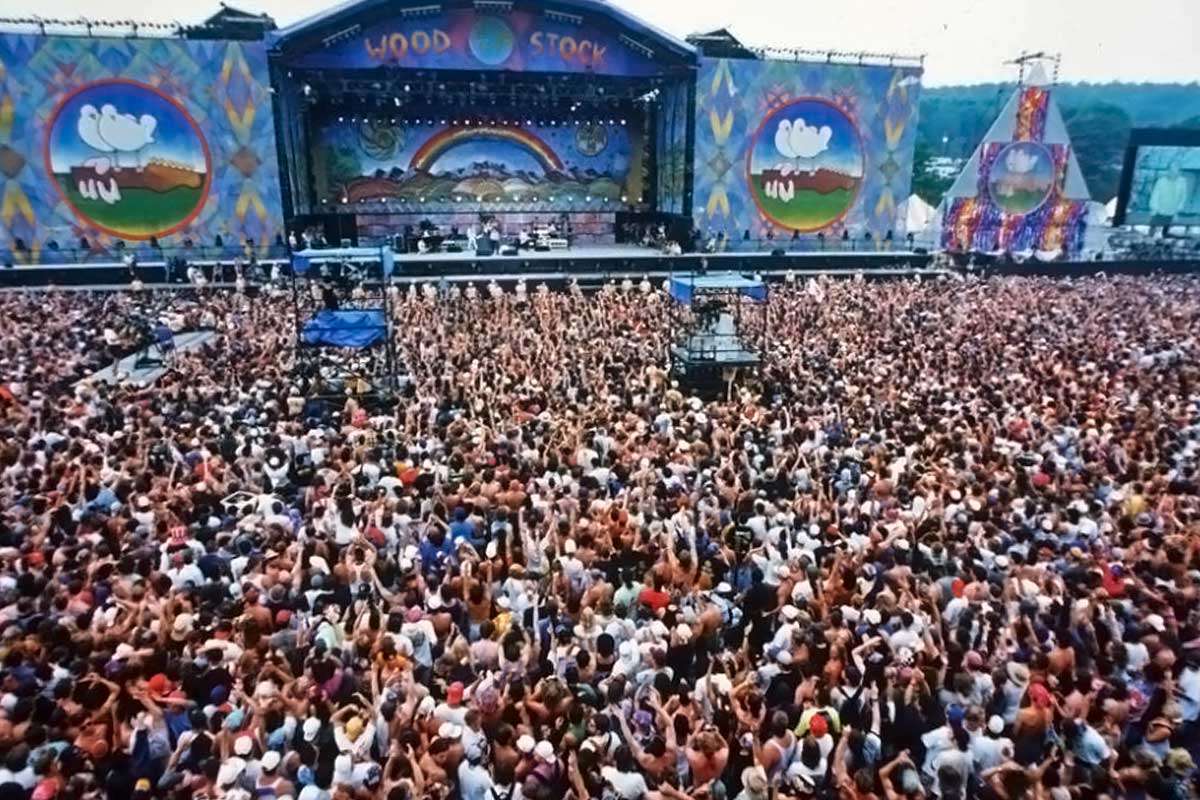What if you could travel back in time to witness musical history in the making? The biggest concerts in history aren’t just shows; they’re seismic cultural events that have shaped generations.
Imagine a sea of humanity stretching as far as the eye can see, all moving in unison to the rhythm of their favorite band. From the thunderous roar of 3.5 million fans at Jean-Michel Jarre’s Moscow spectacle to the sun-soaked masses at Rod Stewart’s Copacabana Beach extravaganza, these types of events almost defy imagination.
But what makes a concert truly “big”? Is it just about numbers, or is there something more magical at play? Whether you’re a seasoned concert-goer or a curious music lover, buckle up for a journey through the most jaw-dropping, record-shattering live performances ever staged. Get ready to explore the concerts that didn’t just make history – they are history.

Defining the Mega-Concert
When you hear ‘mega-concert,’ think of events with staggering attendance numbers, significant cultural impacts, and often record-breaking accolades.
Criteria for ‘Biggest’ Concerts
The criteria to classify concerts as the ‘biggest’ typically revolve around high attendance figures. These figures are not just estimates but are often substantiated by ticket sales and official counts. For rock and guitar-driven music events, which often cater to enormous crowds, these numbers can run into the hundreds of thousands and define the scale of a mega-concert.

Guinness World Records Involvement
The involvement of the Guinness World Records serves as validation for attendance figures. When a concert claims the title of ‘biggest,’ it’s often registered and verified by the Guinness Book. This acknowledgment not only etches the concert’s name in history but also sets a benchmark for future events, underscoring the importance of official record-keeping.
Evolution of Concert Attendance
Concert attendance has seen a significant evolution over the years. Rock and guitar-driven music concerts, in particular, have expanded in size, often turning into multi-day events with millions of fans. As each generation surpasses the last attendance record, these mega-concerts symbolize more than live music; they embody a collective experience for massive audiences.
Historical Milestones
When you explore the history of concerts, certain events stand out for their sheer size and cultural impact. From the early days of rock ‘n roll to the monumental gatherings of recent decades, these concerts have set records and captivated millions.
Early Record-Setting Concerts
Woodstock, arguably the most iconic concert of all time, was a pinnacle of the counterculture movement. In 1969, over 400,000 people flooded to a dairy farm in upstate New York for a festival that became a symbol of peace and music. The event featured now-legendary performances by Jimi Hendrix, The Who, and many others.

Another significant event was held at Philadelphia’s JFK Stadium in 1985 – Live Aid. This dual-venue concert (also in London) rallied for famine relief in Ethiopia, and performers like Led Zeppelin and Bob Dylan played to about 100,000 attendees in Philadelphia alone.
Notable Free Concerts
Copacabana Beach in Rio de Janeiro has hosted some of the largest free concerts the world has seen. On New Year’s Eve in 1994, Rod Stewart performed to an estimated 3.5 million people, marking it as one of the most attended live concerts ever held.
In 1991, the band AC/DC headlined a massive free event at Tushino Airfield in Moscow to celebrate the Soviet Union’s 850th anniversary. With a crowd estimated at more than 1.2 million, this concert is often considered one of the largest attendance figures for a rock concert in history.
The influence of Brazil in record-setting concerts continues at Maracanã Stadium in Rio, which has frequently hosted enormous concert events. It has become a go-to destination for artists looking to play to some of the largest crowds in South America.
Artists with Largest Crowds
Throughout history, certain artists have managed to pull in crowds so large, they’ve become landmarks in the annals of live performances. You’ll discover how rock legends, pop icons, and electronic music pioneers have shaped some of the most attended concerts in music history.
Rock Legends
The Rolling Stones, fronted by the iconic Mick Jagger, have repeatedly broken attendance records, including their famous 2006 performance at Copacabana Beach, which drew an estimated one million fans. Similarly, U2’s 360° Tour in 2009-2011 holds the record for the highest-attended tour ever. Across the decades, bands like Queen and AC/DC defined large-scale rock shows with their electrifying performances.
| Artist/Band | Notable Concert |
|---|---|
| The Rolling Stones | Copacabana Beach (2006) |
| U2 | 360° Tour (2009-2011) |
| Queen | Live Aid (1985) |
| AC/DC | Monsters of Rock (1991) |
Pop Icons
Madonna’s Blond Ambition Tour amazed fans globally and transformed live pop performances. Michael Jackson, the King of Pop, mesmerized countless fans, including those at the history-making Bucharest concert. Another remarkable event was Live Aid in 1985, where icons like Paul McCartney and Tina Turner performed for a global cause, binding millions across multiple venues.
| Artist | Notable Concert |
|---|---|
| Madonna | Blond Ambition Tour (1990) |
| Michael Jackson | HIStory Tour, Bucharest (1996) |
| Tina Turner | Live Aid (1985) |
Electronic and Dance Music Pioneers
Jean-Michel Jarre amassed enormous crowds with his spectacular outdoor performances, utilizing lights, projections, and fireworks. His 1997 performance in Moscow celebrated the city’s 850th anniversary and was attended by 3.5 million people, making it one of the largest concerts ever held.
| Artist | Notable Concert |
|---|---|
| Jean-Michel Jarre | Moscow (1997) |
Rock bands and artists have consistently attracted massive crowds around the world, proving the undeniable draw of guitar-driven music and the timeless appeal of rock performances.
Record-Breaking Venues
In the landscape of live music, certain venues stand out for hosting the most massive and memorable concerts in rock history. These places have become landmarks, etching their names into the record books and the cultural consciousness.
Stadiums and Parks
- Maracanã Stadium: In Rio de Janeiro, the Maracanã Stadium witnessed Rod Stewart’s 1994 New Year’s Eve concert, which holds a record for drawing an immense crowd, particularly for rock music events. This monumental venue has been synonymous with large-scale events, leaving a lasting legacy in the history of live performances.
- Raceway Park in Englishtown, New Jersey: A significant highlight in the world of rock, particularly within the United States, was The Grateful Dead concert held in 1977. It attracted an enormous number of rock enthusiasts, underlining the capacity of Raceway Park to accommodate massive gatherings.
Iconic City Locations
- Copacabana Beach: Famous not only for its picturesque views but also for its capacity to host record-breaking concerts. For instance, you may recall Rod Stewart’s 1994 concert, which is often cited as one of the largest live performances in rock history, with millions of people attending.
- Modena Park: Italian rock icon Vasco Rossi made history at Modena Park, drawing a colossal audience in 2017 for a single-artist concert. Your awareness of the international music scene is enriched by knowing such venues that have shattered attendance records.
Cultural Impact
The concerts that have made history extend far beyond their live event, offering a tableau for music festivals and artists to underscore social causes, drive economic activity, and unite people. These gatherings celebrate freedom and frequently mark pivotal moments in cultural revolutions.
Music Festivals’ Role
Music festivals, particularly those grounded in rock and guitar-driven music, serve as a dynamic platform for both communal experience and artist expression. When you attend events like Live 8, historical significance converges with the thrill of witnessing powerful performances. This globally synchronized concert series aimed at combating famine exhibited an unprecedented scale of unity among nations through music.
Concerts as Social Movements
Concerts sometimes double as embodiments of social movements, harnessing collective excitement for change. The French rock scene, often packed with energetic riffs, truly came alive during Bastille Day celebrations, echoing the unity and thirst for freedom that sparked the French Revolution. Symbolically, these gatherings employ the language of music to sustain the spirit of historical defiance and solidarity.
Economic and Tourism Boost
The influx of traveling music enthusiasts to iconic concerts is a considerable boon to local economies. When examining the economic impact, it is vital to consider not only the direct spendings, such as tickets and merchandise but also the indirect benefits accrued through tourism. Staging massive events like music festivals invigorates local industries, from hospitality to transportation, illustrating the far-reaching influence of these temporal but impactful celebrations.
Conclusion
You have journeyed through the chronicles of live concerts, witnessing the incredible gatherings that unite thousands, and at times even millions, through the universal language of music. The record-breaking attendance figures in cities like Moscow and Rio de Janeiro stand testament to music’s powerful capacity to draw together diverse crowds for a shared experience.
The scale of these events showcases not just popularity but also the bonding and unity that music promotes across cultures and nations.
Live concerts are more than just about entertainment; they signify a collective experience that transcends age, culture, and nationality. When you think of the biggest concerts in history, remember they are milestones in human unity, marked by shared rhythms and melodies.
Remember, your participation in a live concert, whether as part of a thundering crowd in Moscow or a rhythm-loving throng in Rio, is a stitch in the fabric of musical history. These events are not just spectacles of sound and performance—they are a celebration of collective humanity, resonating the chords of togetherness at every beat.
